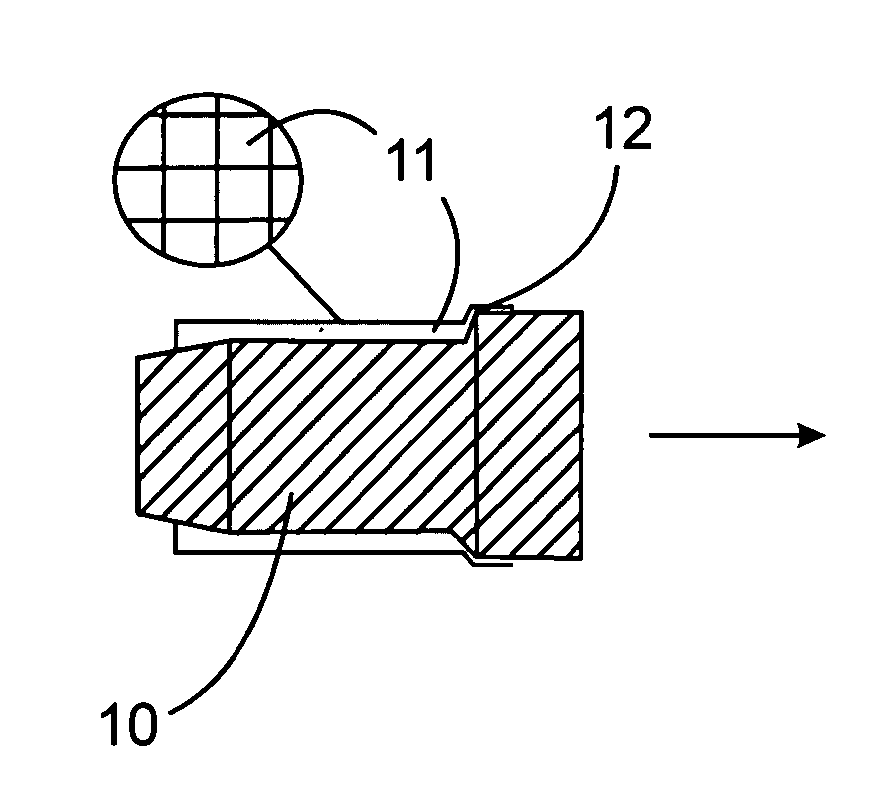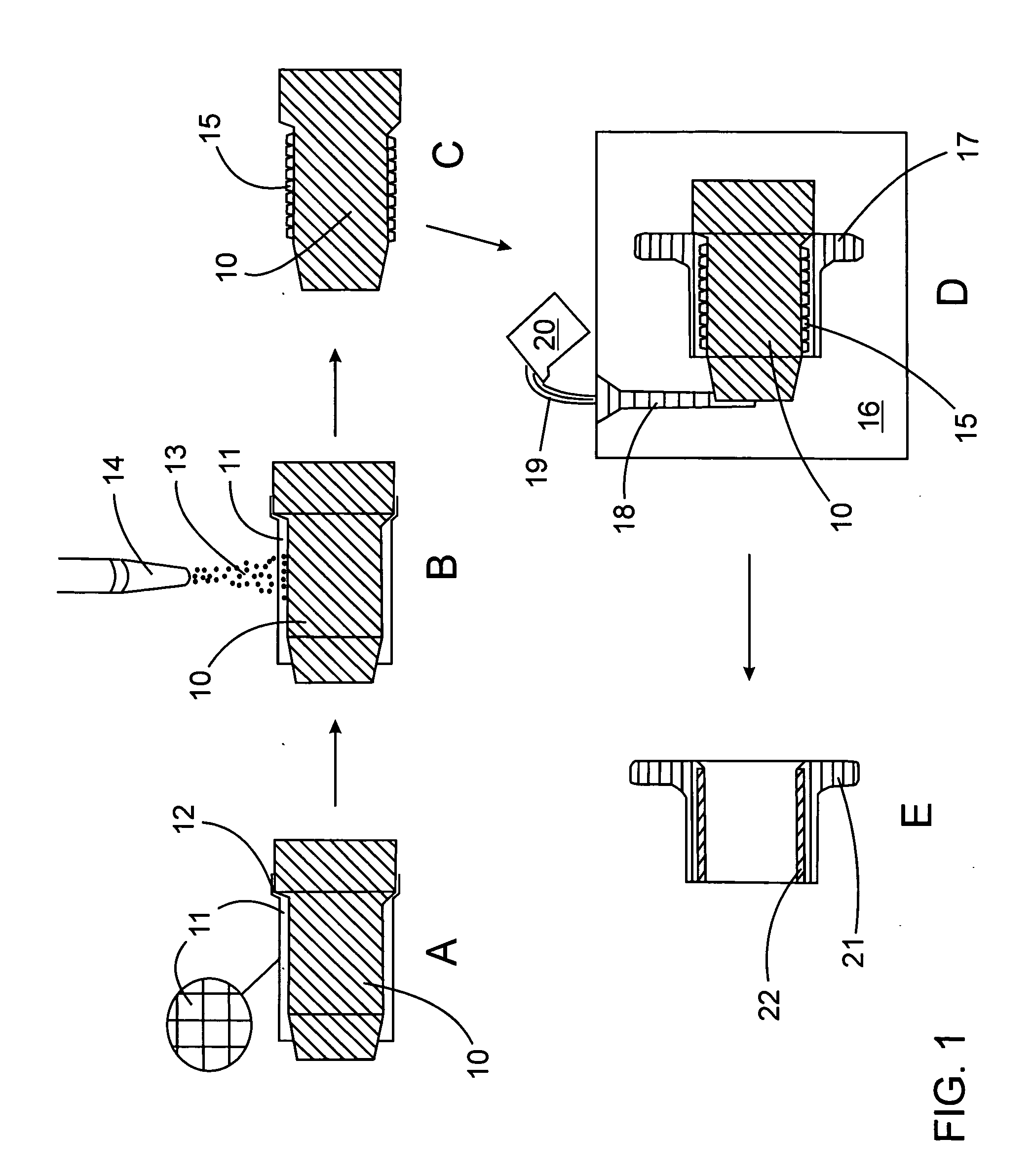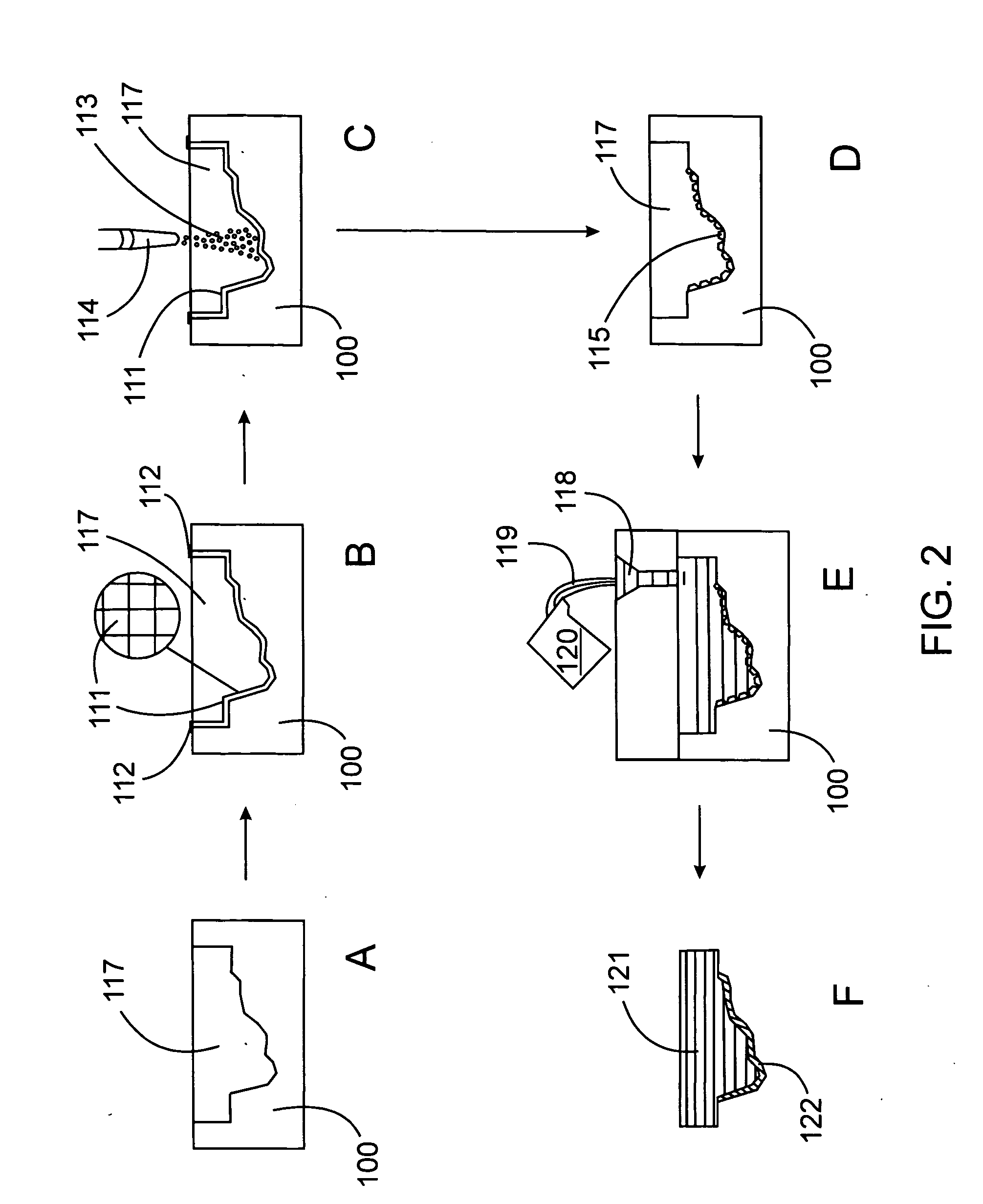Surface modification of castings
- Summary
- Abstract
- Description
- Claims
- Application Information
AI Technical Summary
Benefits of technology
Problems solved by technology
Method used
Image
Examples
example 1
[0051] A ceramic casting mould having a mould cavity was fabricated according to a process similar to the Unicast process (R. E. Greenwood, “Ceramic Moulding by the Unicast Process”, ASTME Tech. Paper No. CM67-534 (1967), the disclosure of which is herein incorporated by reference) and was fired at 950° C. for 4 hours to strengthen the mould. A perforated mask made of steel mesh (14 mesh with a wire diameter of 0.016 inch) was placed about 2 mm away from the mould cavity surface by clamping an extended portion of the mask to the mould surface surrounding the opening in the mould cavity. Using a Sulzer Metco™ type 5P-II Thermospray gun, a coating material consisting of Metco™ 15E (a self-fluxing nickel-based alloy powder having a composition of Ni: 70.5%, Cr: 17.0%, Fe: 4.0%, Si: 4.0%, B: 3.5%, C, 1.0% and a melting point of 1024° C.) was sprayed through the mask on to the mould cavity surface. To build up a thick coating layer, the spray was repeated 32 times without any sign of spa...
example 2
[0053] A coating layer on a vertical surface of a ceramic casting mould was produced in accordance with the procedure of Example 1 except that some areas of the mould surface were left unmasked. The coating layer was heated under reduced pressure (8×10−2 Torr) to 1100° C., which is above the melting point of the Metco™ 15E, in 50 minutes and held for 2 hours. The coating layer was melted but still remained on the mould surface in the areas where the mask was used, as shown in FIG. 5. The coating thickness before heating to 1100° C. was 0.8 mm. However, in the areas where no mask was used, the coating layer completely spalled during the heating process, presumably due to high thermal stresses in the coating layer as a result of the large difference in thermal expansion coefficient between the coating layer and the ceramic casting mould.
example 3
[0054] A set of four ceramic casting moulds were fabricated using the process described in Example 1, the casting moulds having mould cavities for rectangular bar-shaped specimens 110 mm long by 30 mm wide with thicknesses of 8 mm, 16 mm, 24 mm and 32 mm, respectively. Steel mesh, as described in Example 1, was used to make masks corresponding to the cavities for each of the ceramic casting moulds. The masks were placed in each mould cavity about 2 mm from the mould cavity surface in each instance. Metco™ 15E nickel-based self-fluxing alloy was applied to each mould cavity surface by flame thermal spray coating under conditions described in Example 1. FIG. 6 shows the coating layer of the Metco™ 15E on the bottom 60 and side 61 surfaces of the mould cavity. P20 tool steel was melted and cast into the closed ceramic casting moulds at 1550° C. In each of the four cases, a continuous surface layer of the Metco™ 15E was alloyed to the surface of the steel casting. FIG. 7A shows one exam...
PUM
| Property | Measurement | Unit |
|---|---|---|
| Length | aaaaa | aaaaa |
| Length | aaaaa | aaaaa |
| Length | aaaaa | aaaaa |
Abstract
Description
Claims
Application Information
 Login to View More
Login to View More - R&D
- Intellectual Property
- Life Sciences
- Materials
- Tech Scout
- Unparalleled Data Quality
- Higher Quality Content
- 60% Fewer Hallucinations
Browse by: Latest US Patents, China's latest patents, Technical Efficacy Thesaurus, Application Domain, Technology Topic, Popular Technical Reports.
© 2025 PatSnap. All rights reserved.Legal|Privacy policy|Modern Slavery Act Transparency Statement|Sitemap|About US| Contact US: help@patsnap.com



